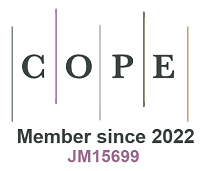REFERENCES
1. Wang Z, Li TT, Peng HK, Ren HT, Lou CW, Lin JH. Low-cost hydrogel adsorbent enhanced by trihydroxy melamine and β-cyclodextrin for the removal of Pb(II) and Ni(II) in water. J Hazard Mater. 2021;411:125029.
2. Jasim SA, Hachem K, Abdelbasset WK, Yasin G, Suksatan W, Chem C. Efficient removal of Pb(II) using modified chitosan Schiff base@Fe/NiFe. Int J Biol Macromol. 2022;204:644-51.
3. Rajput S, Pittman CU Jr, Mohan D. Magnetic magnetite (Fe3O4) nanoparticle synthesis and applications for lead (Pb2+) and chromium (Cr6+) removal from water. J Colloid Interface Sci. 2016;468:334-46.
4. Ozdes D, Gundogdu A, Kemer B, Duran C, Senturk HB, Soylak M. Removal of Pb(II) ions from aqueous solution by a waste mud from copper mine industry: equilibrium, kinetic and thermodynamic study. J Hazard Mater. 2009;166:1480-7.
5. Zhang J, Li L, Li Y, Yang C. Microwave-assisted synthesis of hierarchical mesoporous nano-TiO2/cellulose composites for rapid adsorption of Pb2+. Chem Eng J. 2017;313:1132-41.
6. Li G, Ye J, Fang Q, Liu F. Amide-based covalent organic frameworks materials for efficient and recyclable removal of heavy metal lead (II). Chem Eng J. 2019;370:822-30.
7. Huang Z, Xiong C, Ying L, et al. A post-functional Ti-based MOFs composite for selective removal of Pb (II) from water. J Hazard Mater. 2022;432:128700.
8. Wang P, Shen T, Li X, Tang Y, Li Y. Magnetic mesoporous calcium carbonate-based nanocomposites for the removal of toxic Pb(II) and Cd(II) ions from water. ACS Appl Nano Mater. 2020;3:1272-81.
9. Lu S, Huang J, Liu G, et al. Ammonia-modulated reversible gel-solution phase transition and fluorescence switch for a salicylhydrazide-based metal-organic gel. RSC Adv. 2017;7:30979-83.
10. Liu W, Yang Y, Zhong Q, et al. Zr4+-based metal organic gel as a fluorescent “Turn on-off” sensing platform for the selective detection and adsorption of CrO42-. Mater Chem Front. 2021;5:1932-41.
11. You D, Shi H, Xi Y, et al. Simultaneous heavy metals removal via in situ construction of multivariate metal-organic gels in actual wastewater and the reutilization for Sb(V) capture. Chem Eng J. 2020;400:125359.
12. Wang H, Chen BH, Liu DJ. Metal-organic frameworks and metal-organic gels for oxygen electrocatalysis: structural and compositional considerations. Adv Mater. 2021;33:e2008023.
13. Gao Y, Liu Z, Li Y, Zou D. Three-in-one multifunctional luminescent metal-organic gels/sodium alginate beads for high-performance adsorption and detection of chlortetracycline hydrochloride, and high-security anti-counterfeiting. Chem Eng J. 2023;452:139194.
14. Ma Y, Li A, Gao X, et al. Effective separation of enantiomers based on novel chiral hierarchical porous metal-organic gels. Macromol Rapid Commun. 2019;40:e1800862.
15. Qi H, Zhang T, Jing C, et al. Metal-organic gel as a fluorescence sensing platform to trace copper(II). Anal Methods. 2021;14:52-7.
16. Zhang K, Dai Z, Zhang W, et al. EDTA-based adsorbents for the removal of metal ions in wastewater. Coord Chem Rev. 2021;434:213809.
17. Huang Z, Zhao M, Wang C, Wang S, Dai L, Zhang L. Preparation of a novel Zn(II)-imidazole framework as an efficient and regenerative adsorbent for Pb, Hg, and As ion removal from water. ACS Appl Mater Interfaces. 2020;12:41294-302.
18. Yin N, Wang K, Wang L, Li Z. Amino-functionalized MOFs combining ceramic membrane ultrafiltration for Pb (II) removal. Chem Eng J. 2016;306:619-28.
19. Kumar A, Chowdhuri AR, Laha D, Mahto TK, Karmakar P, Sahu SK. Green synthesis of carbon dots from Ocimum sanctum for effective fluorescent sensing of Pb2+ ions and live cell imaging. Sensor Actuat B Chem. 2017;242:679-86.
20. Varaprasad K, Nùñez D, Ide W, Jayaramudu T, Sadiku ER. Development of high alginate comprised hydrogels for removal of Pb(II) ions. J Mol Liq. 2020;298:112087.
21. Chen JF, Liu X, Ma JF, et al. A pillar[5]arene-based multiple-stimuli responsive metal-organic gel was constructed for facile removal of mercury ions. Soft Matter. 2017;13:5214-8.
22. Chen J, Dong R, Chen S, et al. Selective adsorption towards heavy metal ions on the green synthesized polythiophene/MnO2 with a synergetic effect. J Clean Prod. 2022;338:130536.
23. Wang Y, van Zwieten L, Wang H, et al. Sorption of Pb(II) onto biochar is enhanced through co-sorption of dissolved organic matter. Sci Total Environ. 2022;825:153686.
24. Fu L, Wang S, Lin G, et al. Post-modification of UiO-66-NH2 by resorcyl aldehyde for selective removal of Pb(II) in aqueous media. J Clean Prod. 2019;229:470-9.
25. Ahmadijokani F, Tajahmadi S, Bahi A, et al. Ethylenediamine-functionalized Zr-based MOF for efficient removal of heavy metal ions from water. Chemosphere. 2021;264:128466.
26. Saleem H, Rafique U, Davies RP. Investigations on post-synthetically modified UiO-66-NH2 for the adsorptive removal of heavy metal ions from aqueous solution. Micropor Mesopor Mater. 2016;221:238-44.
27. Tang J, Chen Y, Zhao M, Wang S, Zhang L. Phenylthiosemicarbazide-functionalized UiO-66-NH2 as highly efficient adsorbent for the selective removal of lead from aqueous solutions. J Hazard Mater. 2021;413:125278.
28. Zhang YW, Cao Y, Mao CJ, Jiang D, Zhu W. An iron(III)-based metal-organic gel-catalyzed dual electrochemiluminescence system for cytosensing and in situ evaluation of the VEGF165 subtype. Anal Chem. 2022;94:4095-102.
29. Gu D, Yang W, Lin D, et al. Water-stable lanthanide-based metal-organic gel for the detection of organic amines and white-light emission. J Mater Chem C. 2020;8:13648-54.
30. Fang Y, Ren G, Li M, Yang Y, Guo D, Pan Q. Sensitively liquid and gaseous detection of formaldehyde based on a supramolecular organic framework. Sensor Actuat B Chem. 2021;349:130726.
31. Sun Y, Dramou P, Song Z, et al. Lanthanide metal doped organic gel as ratiometric fluorescence probe for selective monitoring of ciprofloxacin. Microchem J. 2022;179:107476.
32. Zhang Y, Li B, Ma H, Zhang L, Zhang W. An RGH-MOF as a naked eye colorimetric fluorescent sensor for picric acid recognition. J Mater Chem C. 2017;5:4661-9.
33. Afzalinia A, Mirzaee M. Ultrasensitive fluorescent miRNA biosensor based on a “sandwich” oligonucleotide hybridization and fluorescence resonance energy transfer process using an Ln(III)-MOF and Ag nanoparticles for early cancer diagnosis: application of central composite design. ACS Appl Mater Interfaces. 2020;12:16076-87.
34. Song XX, Fu H, Wang P, Li HY, Zhang YQ, Wang CC. The selectively fluorescent sensing detection and adsorptive removal of Pb2+ with a stable [δ-Mo8O26]-based hybrid. J Colloid Interface Sci. 2018;532:598-604.
35. Wu P, He Y, Lu S, et al. A regenerable ion-imprinted magnetic biocomposite for selective adsorption and detection of Pb2+ in aqueous solution. J Hazard Mater. 2021;408:124410.
36. Ngana BN, Seumo PMT, Sambang LM, Dedzo GK, Nanseu-njiki CP, Ngameni E. Grafting of reactive dyes onto lignocellulosic material: application for Pb(II) adsorption and electrochemical detection in aqueous solution. J Environ Chem Eng. 2021;9:104984.
37. Awual MR. Innovative composite material for efficient and highly selective Pb(II) ion capturing from wastewater. J Mol Liq. 2019;284:502-10.
38. Pei L, Yang H, Chen S, Wang L. UiO-66-NHC(S)NHMe/three-dimensional macroporous carbon for removal and electrochemical detection of Cd2+, Pb2+, Cu2+, and Hg2+. Ind Eng Chem Res. 2022;61:1588-95.
39. Awual MR, Hasan MM, Iqbal J, et al. Naked-eye lead(II) capturing from contaminated water using innovative large-pore facial composite materials. Microchem J. 2020;154:104585.
40. Sun Y, Jian-wang, Li P, Yang M, Huang X. Highly sensitive electrochemical detection of Pb(II) based on excellent adsorption and surface Ni(II)/Ni(III) cycle of porous flower-like NiO/rGO nanocomposite. Sensor Actuat B Chem. 2019;292:136-47.
41. Schecher WD, Mcavoy DC. MINEQL+: a software environment for chemical equilibrium modeling. Comput EnvironUrban Syst. 1992;16:65-76.
42. Qi N, Zhao H, Qin Y, Wang Q, Wang G, Li Y. An innovative strategy for synchronous treatment of combined heavy metal and organic pollutants through polysaccharide gel encapsulating S2. Sci Total Environ. 2020;742:140601.
43. Ha HD, Jang M, Liu F, Cho Y, Seo TS. Upconversion photoluminescent metal ion sensors via two photon absorption in graphene oxide quantum dots. Carbon. 2015;81:367-75.








